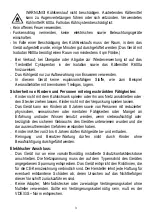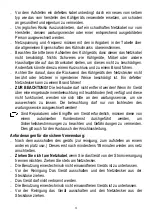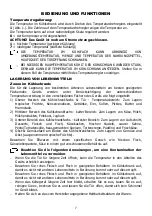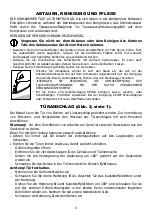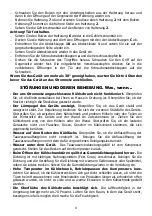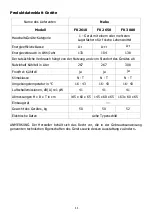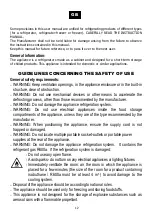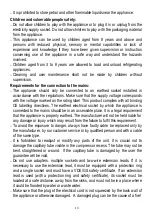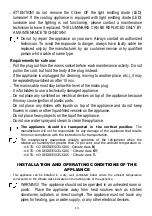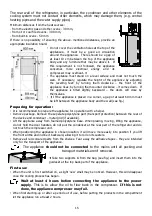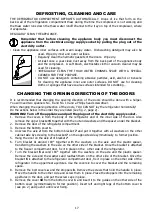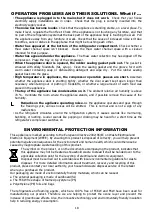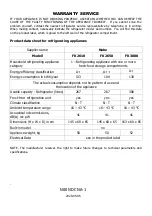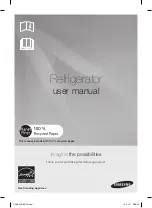
17
DEFROSTING, CLEANING AND CARE
THE REFRIGERATOR COMPARTMENT DEFROSTS AUTOMATICALLY. Drops of ice that form on the
back wall of the refrigeration compartment thaw during the time the compressor is not working and
the thaw water runs down the thaw water runoff channel to the tray on top of the compressor, where
it evaporates.
REGULARLY CLEAN THE APPLIANCE.
Remember that before cleaning the appliance body you must disconnect the
appliance from the electrical energy supply socket by pulling the plug out of the
electricity outlet.
•
Clean the appliance inner surfaces with warm soapy water. Dishwashing detergent may also be
used. Wipe dry inner and outer surfaces.
•
Regularly clean the hermetic gaskets of the doors. Wipe dry.
•
At least once a year clean dust away from the back part of the appliance body
and the compressor. A soft brush, electrostatic cloth or vacuum cleaner may be
used for cleaning.
•
REGULARLY CLEAN THE THAW WATER CHANNEL SPACE WITH A SPECIAL
CLEANER FOR THAT PURPOSE.
•
DO NOT use detergents containing abrasive particles, acid, alcohol or benzene
for cleaning the appliance inner and outer surfaces. DO NOT use for cleaning
cloths or sponges that have coarse surfaces intended for scrubbing..
CHANGING THE OPENING DIRECTION OF THE DOORS
It is recommended that changing the opening direction of the doors should be done with a helper.
You will need two spanners No. 8 and No. 10 and a Philips head screwdriver.
When changing the opening direction of the doors, YOU CAN NOT lay the refrigerator horizontally!
Do the actions below in the order they are listed (see fig. 2, page 2).
WARNING! Turn off the appliance and pull the plug out of the electricity supply socket.
1.
Remove the covers
c
from the body of the refrigerator and of the inner side of the door. Also
remove the upper bracket
6
together with the nut and washers and the spacer under the bracket.
2.
Remove the door of the refrigerator compartment.
3.
Remove the bottom cover
1
.
4.
Unscrew the axle
2
from the bottom bracket
7
and put it together with all washers on the other
cabinet side by screwing to the bracket
7
on the opposite side symmetrically to former position.
5.
Hang the door on the axle
2
of bracket
7
.
6.
Turn bracket
4
around 180° together with the washers on the axle and the plastic spacer,
transferring the washers to the axle on the other side of the bracket. Once the bracket is attached
to the freezer compartment door, fix it in place on the other side of the refrigerator.
7.
Turn the bracket
6
around 180° together with the washers on the axle and the plastic spacer.
Remove the axle and the washers and reattach them on the other side of the bracket. Once the
bracket
6
is attached to the refrigerator compartment door, fix it in place on the other side of the
refrigerator in the uppermost apertures. Use the covers
c
to cover the bracket and the remaining
space.
8.
Remove the bolt covers
a
and the stoppers
b
. Remove the screws that hold the handle in place.
Move the handle to the other side and screw them in place. Place the stoppers into the remaining
apertures in the door, and put the screw caps in place.
9.
Remove the cover
10
from the bottom cover
1
and insert it to the guides on the other side of the
bottom cover (symmetrically to former position). Insert left and right legs of the bottom cover
1
(see pic. 2) and push it until cover fixing.
Summary of Contents for FK 2610
Page 2: ...1 ...

